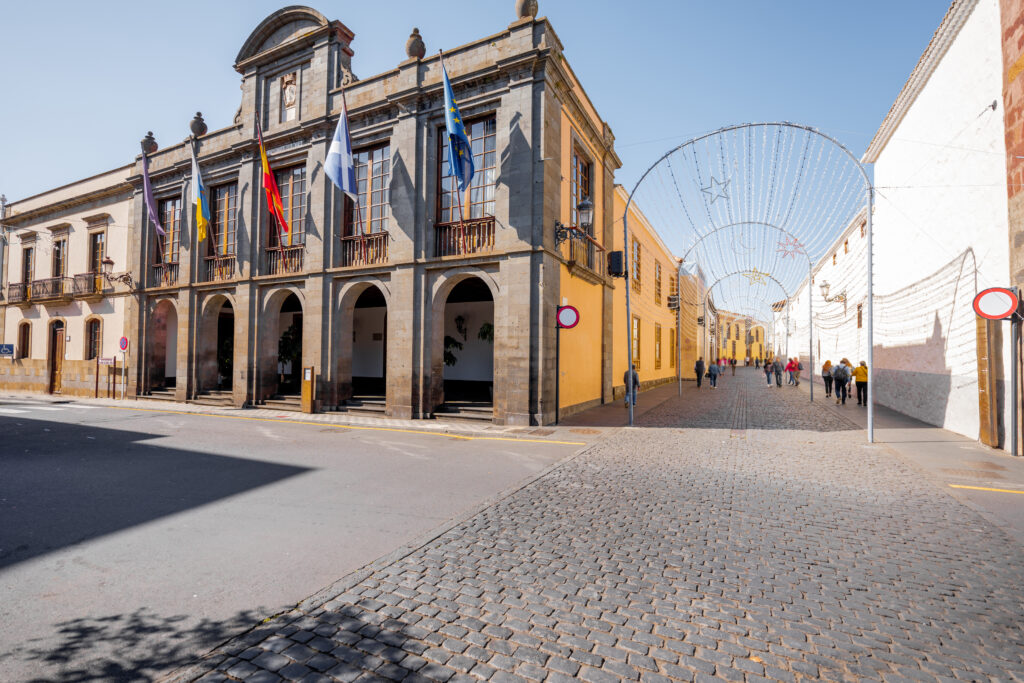

Spain’s Queen Letizia argued that Spanish was a “tool of seduction,” while also highlighting the work and importance of Cervantes centers around the world during the first working session of the institute’s annual meeting, which took place over three days on Spain’s is- land of Tenerife off the coast of Africa and brought together more than 70 regional managers and the institution’s leadership team.
In a brief closing statement after the first session—which focused on the situation of Spanish around the world, specifically the US and Brazil—the queen thanked all the center directors for their work, “for continuing to believe” that Spanish is a language with a culture that serves “understanding, harmony, and communication.”
“In short, a tool of seduction,” added Letizia, adding, “We must continue to focus attention so that Spanish society remains aware of what an institution like the Cervantes means and the importance of the work every one of you does in each center.”
In this closed-door meeting, Cervantes director Luis García Montero explained that the aim was to analyze progress made so far, as well as the “hopes and plans” for Spanish in the future, focusing on the importance of certain terms so relevant today, such as “freedom, cayuco (literally a basic kayak, but now signifying desperate migration), genocide, and multicultural- ism.” The event was held on the Canary Islands at the University of La Laguna, the dean of which, Francisco Javier García, praised for its “commitment to fostering understanding” both in Latin America and Africa, adding, “When we speak of language, it goes beyond a set of signs and techniques for transmitting messages. It is cultural and academic diplomacy, but also an incredibly powerful tool for bringing us closer to other cultures, positioning ourselves as a country, and breaking down barriers—something so necessary in a polarized and tense world.”
García Montero summarized some of the institution’s achievements, such as the opening of Cervantes chairs in Edinburgh (United Kingdom), Virginia (US), and Havana (Cuba); a 32% increase in science-related events in the Cervantes program; and the growth of women’s participation in Cervantes activities, reaching 50.2% of the total.
He also mentioned future challenges, with projects for the coming year including the launch of a dictionary of Iberian- isms common to Spain and Portugal and preparations for an upcoming anthology of Vargas Llosa, as well as a poetry anthology by Oswaldo Chanove.
In the first working session, attended by the Queen, several directors discussed Spanish as a border language in relation to the countries where their centers are located, describing it as “a good antidote to the closed identity discourses that are dominating the world.” The director of the Global Spanish Observatory, Francisco Moreno-Fernández, opened the session by stating that the Spanish language coexists in spaces where “it evolves, adapts, and is enriched,” so linguistic diversity in these frontier areas “is not a weakness but a strength and a driver of creativity.”
Francisco Pueyo, director of the Har- vard Observatory, focused on the situation of Spanish in the US under the Trump administration, arguing that Spanish “is not a foreign or immigrant language on American soil, but a historic language,” which, as of today, is used by 60 million people in the US and will be spoken by more than 100 million in a few years.
Cervantes’s director in Brasilia, Raquel Romero, described the evolution of the law passed in Brazil in 2005 by President Lula, which made Spanish mandatory in the Brazilian educational system and which was later repealed and then partially reinstated. “Given this scenario, Spain’s action must be unified, and actions and spaces must be generated to redirect a situation that is, for now, not favorable,” she rallied.
Concha Barceló, head of Cervantes in Dakar, Senegal, focused on the “struggle” between French and Spanish to increase their numbers of speakers on the African continent. She argued that Spanish had arrived in Africa differently from French and was seen as more friendly and ap- proachable than French with its colonial associations, which was demonstrated by the fact that there are already more than two million students learning Spanish in Sub-Saharan Africa.
New Delhi chief María Gil Burmann highlighted the “growing enthusiasm” in India for Spanish, with more than 33 university departments offering Spanish programs and at least a dozen offering bachelor’s, master’s, and doctoral degrees. “Spanish in India is not in decline; it is an academic and professional opportunity, and businesses see it as a language that opens doors.”
This was the first time that the Canary Islands has hosted the meeting, so it was fitting for the inaugural lecture to be given by José Segura, head of Casa África, the mission of which is to develop ties between Africa and Spain. Segura warned, “In Europe, there is great concern looking northward for enemies, but they are forgetting the south, where political and military movements are emerging that will not benefit any of us.”

